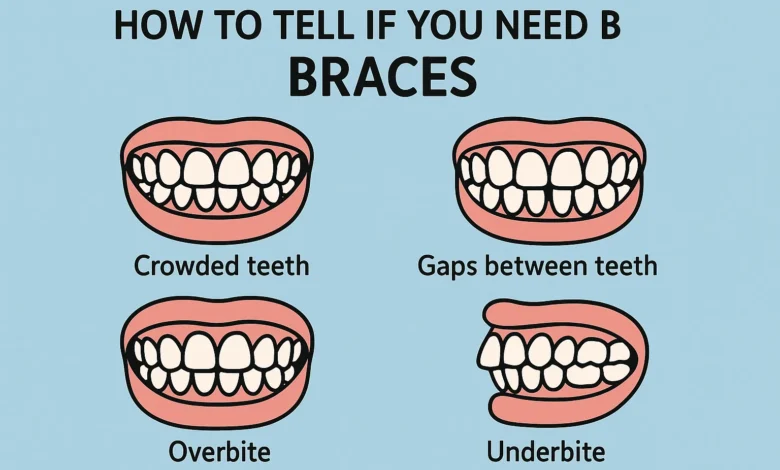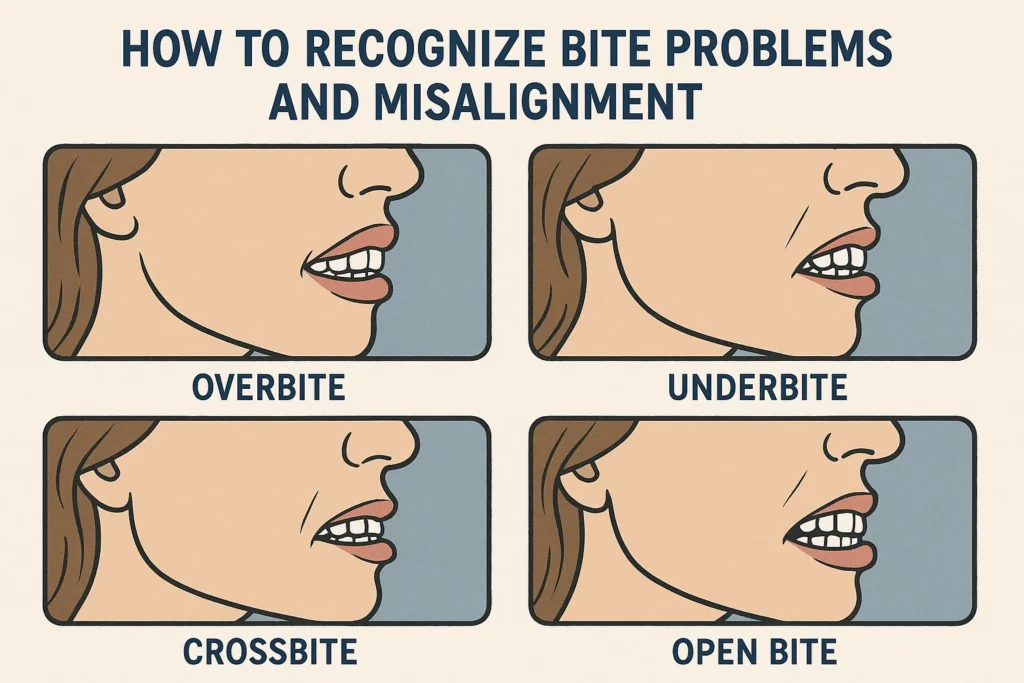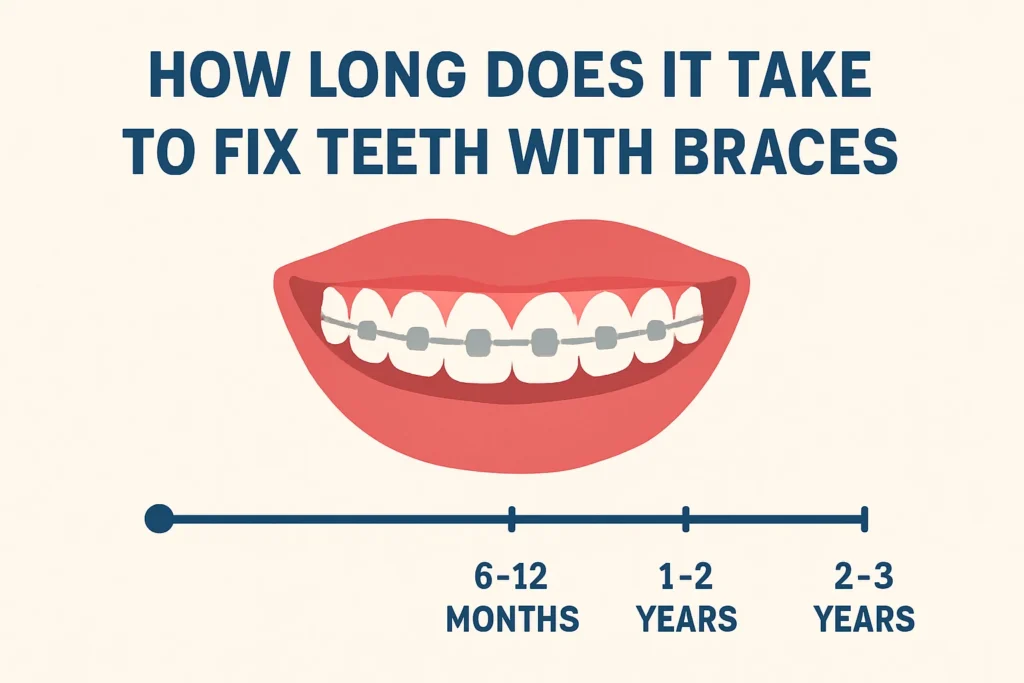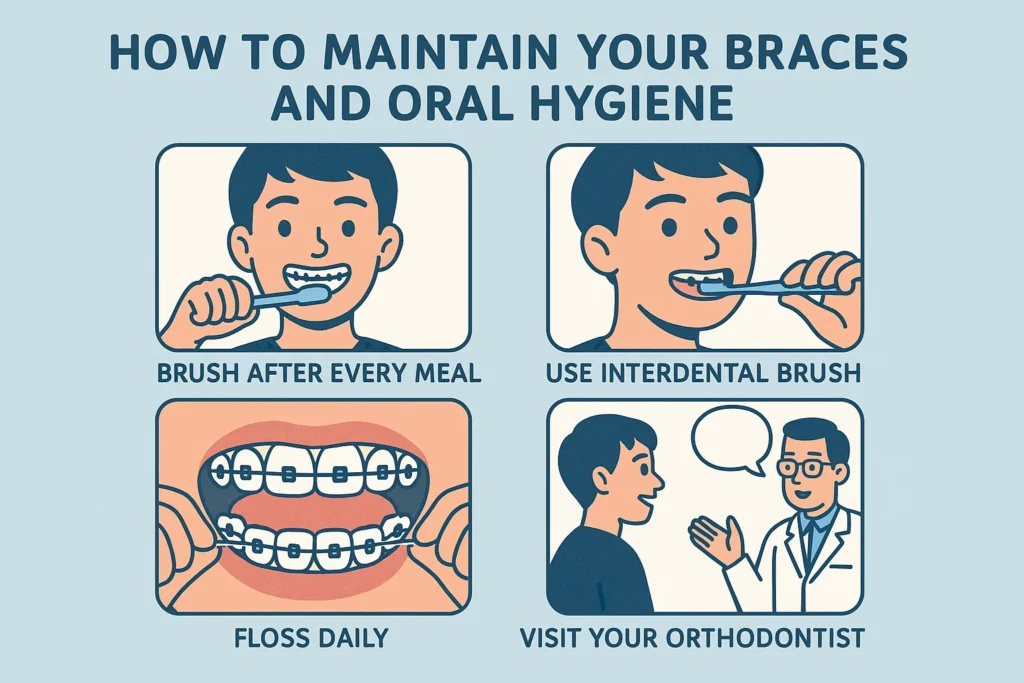How to Tell if You Need Braces? Find Out the Key Signs

How to Tell if You Need Braces: A Comprehensive Guide to Recognizing the Signs
Introduction
If you’ve ever wondered how to tell if you need braces, you’re not alone. The appearance of your smile suffers from crooked teeth and misaligned bites but these conditions also create oral health problems which make chewing and tooth cleaning and dental hygiene maintenance more challenging. Orthodontic treatment through braces provides an effective solution to address these dental problems.
This guide explains the typical warning signs for needing braces along with the various brace options and how orthodontic treatment enhances both your smile appearance and dental wellness. The guide explains when to consult an orthodontist and what happens during treatment and how early intervention produces the most effective results.
1. What Are Braces and Why Are They Important?

Orthodontic devices known as braces function to align mispositioned teeth and fix dental alignment problems while enhancing oral wellness. The orthodontic system uses brackets and wires together with elastic bands to provide gentle tooth movement which leads to better positioning. Orthodontic treatment helps patients address dental problems that include overbites and underbites as well as crossbites and crooked teeth and gaps between teeth.
Orthodontic treatment serves dual purposes by creating better appearance while simultaneously enhancing bite function and oral hygiene and maintaining long-term dental health. The alignment of teeth makes dental hygiene simpler which decreases the chance of developing cavities and gum disease and other dental health problems.
If you’re wondering how to tell if you need braces, it’s important to look for common signs that indicate your teeth or bite may not be in proper alignment.
2. How to Tell if You Need Braces: Common Signs to Watch For
Overbite or Underbite
One of the clearest signs that you might need braces is having an overbite or underbite.
Overbite:An overbite is dental misalignment in the bilateral and hemi-maxillary teeth zygomaticach where the lower teeth overlap considerably with the upper teeth incisors. This condition complicates optimal mastication and can result in dental attrition.
Underbite:An underbite refers to a malocclusion where the lower jaw protrudes such that the lower teeth edge beyond the upper teeth. This may give rise to the difficulties with mastication as well as phonic articulation.
If your teeth don’t meet properly when you bite down, an orthodontist can evaluate whether braces are needed to correct the alignment.
Crooked or Crowded Teeth
The presence of malocclusion often indicates a need for orthodontic intervention such as braces. Misaligned teeth hinder proper oral hygiene practices including brushing and flossing, thereby increasing the risk for dental caries and periodontal diseases.
Crowding occurs when there isn’t enough space in your mouth for all your teeth to align properly. This can result in overlapping teeth or gaps between them.
Crooked teeth can be caused by genetics, thumb sucking, or early loss of baby teeth.
Braces can help move your teeth into proper alignment and create a healthier bite.
Gaps Between Teeth
Diastema, more commonly known as ‘gaps between teeth’, is a condition that may suggest the necessity of orthodontic intervention, particularly braces. Although some teething gaps may be superficial in some cases, larger gaps may affect one’s ability to speak or chew food. An orthodontist possesses the requisite skills to assist in closing the gaps and ensuring proper teeth alignment.
3. How to Recognize Bite Problems and Misalignment

Bite issues are among the most prevalent reasons individuals pursue orthodontic intervention. A bite problem manifests whenever the dental arches in the maxilla and mandible do not occlude in harmony, leading to some form of discomfort in the anatomical functions of eating, speaking, or deglutition. Some of the bite issues that might be dealt with the application of orthodontic braces are as follows:
Open Bite
The condition of an open bite develops when the upper teeth fail to touch the lower teeth during mouth closure. The condition creates problems with eating and swallowing food and speaking with clarity. The improper alignment of teeth requires braces as a treatment solution.
Crossbite
When your upper teeth bite inside your lower teeth it creates a condition known as crossbite. The condition leads to progressive tooth wear and gum recession and bone loss throughout time. The correction of crossbite requires braces to move teeth into proper alignment for a normal bite.
Deep Bite
A deep bite occurs when the upper teeth significantly overlap the lower teeth. A deep bite that reaches severe levels can lead to damage of both gum tissue and back teeth structures. Braces function to correct deep bites by moving teeth into their correct positions.
4. When to See an Orthodontist for an Evaluation
You should schedule an orthodontic evaluation when you observe any signs of teeth misalignment. Orthodontists suggest parents bring their children for an evaluation at age 7 because this period reveals initial signs of tooth and jaw development issues.
Braces remain an option for adults regardless of their age. Consult an orthodontist if you experience any of these symptoms:
Difficulty chewing or speaking
Frequent jaw pain or headaches
Teeth that don’t meet properly when biting
Crowded, crooked, or overlapping teeth
Persistent thumb sucking or other oral habits
If you have any concerns about the alignment of your teeth or bite, scheduling a consultation with an orthodontist is the best step to take.
5. What Happens During an Orthodontic Consultation
When you visit an orthodontist, they will perform a thorough examination of your teeth, mouth, and jaw. This typically includes:
X-rays: X-rays of your teeth and jaw allow the orthodontist to examine the root structure and determine if there are any issues with tooth development or jaw alignment.
Physical examination: The orthodontist will look for signs of crowding, crooked teeth, or bite issues.
Mouth impressions: The orthodontist may take impressions of your teeth to create a mold and determine the best course of treatment.
Once the orthodontist has assessed your situation, they will recommend a treatment plan tailored to your needs. If braces are needed, they will explain the process and the types of braces available.
6. The Different Types of Braces Available
If the orthodontist determines that you need braces, there are several types of braces available to suit your needs. Each type has its advantages and considerations:
Traditional Metal Braces
Traditional metal braces represent the most widely used type of braces because they provide both durability and effective results. The braces system includes metal brackets which attach to teeth and wires that link them together. Metal braces remain the most effective solution for treating serious dental misalignment and bite problems despite their visible appearance.
Ceramic Braces
The operation of ceramic braces matches metal braces but they use brackets with clear or tooth-colored materials which provide better concealment. Ceramic braces serve as a preferred choice for people who want to maintain their appearance during orthodontic treatment.
Lingual Braces
The placement of lingual braces on the back teeth makes them invisible to the eye since they function similarly to metal braces. The placement of lingual braces on the back teeth creates discomfort and makes cleaning more challenging.
Clear Aligners (Invisalign)
The clear aligner system Invisalign represents a well-known substitute for traditional braces. The clear removable trays function as aligners to move teeth into their correct positions through a gradual process. The treatment of mild to moderate dental issues works best with clear aligners and these devices suit patients who want to keep their treatment private.
7. How Long Does It Take to Fix Teeth with Braces?

The duration of your braces treatment will depend on the severity of your alignment issues. Typically, the treatment timeline is as follows:
Mild cases: 6–12 months
Moderate cases: 12–18 months
Severe cases: 18–36 months
Braces are generally worn for 12 to 24 months, with regular adjustments to ensure progress. After braces are removed, a retainer is usually worn to maintain the results.
8. How Much Do Braces Cost?
The cost of braces can vary depending on several factors, including the type of braces, the complexity of your case, and your geographic location.
Average Cost:
Traditional metal braces: $3,000 to $7,500
Ceramic braces: $4,000 to $8,000
Lingual braces: $8,000 to $10,000
Invisalign: $3,000 to $8,000
Your orthodontist will provide an estimate based on your treatment needs.
9. Insurance Coverage and Payment Plans for Braces

Many dental insurance plans cover a portion of orthodontic treatment, but coverage can vary. It’s important to check with your insurance provider to understand what is covered and what isn’t.
Financing Options:
Payment plans: Many orthodontists offer payment plans to help manage the cost of treatment.
Flexible Spending Accounts (FSAs) or Health Savings Accounts (HSAs) can be used to pay for braces with pre-tax dollars.
Dental discount plans may offer reduced rates for orthodontic care.
10. What to Expect After Getting Braces
Once you get braces, it’s normal to experience some discomfort as your teeth begin to shift. This discomfort typically lasts for a few days after each adjustment.
Post-Braces Care:
Avoid certain foods: Stick to soft foods and avoid sticky or hard foods that could damage your braces.
Follow your orthodontist’s instructions: Wear rubber bands or other accessories as directed.
Maintain good oral hygiene: Brushing and flossing carefully will help prevent plaque buildup and keep your braces in good condition.
11. How to Maintain Your Braces and Oral Hygiene

Taking care of your braces and maintaining good oral hygiene is crucial for the success of your treatment. Follow these steps:
Brush regularly: Brush your teeth and braces after every meal.
Floss carefully: Use special orthodontic flossers to clean between your braces and teeth.
Use fluoride toothpaste: This helps protect your teeth from cavities and strengthens enamel.
12. Final Thoughts: Is It Time for Braces?
If you are wondering how to check if you need braces then either check for signs of misalignment, bite issues, or trouble chewing. An orthodontist’s check up is the most reliable way to tell if braces are needed.
Having braces is an investment for the well-being of your mouth. If you are properly committed to your treatment, you will definitely enjoy an enhanced smile for a long time.
Pros and Cons of Braces: How to Decide If Braces Are Right for You



